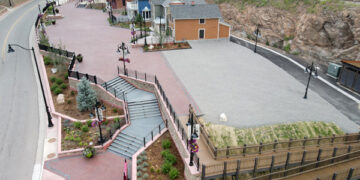 Concerns for Our Wildlife and Habitat
Concerns for Our Wildlife and Habitat
By Nahanni Freeman
I first moved to Gilpin County in 1975, attending Clark Elementary School and living in Black Hawk. After college, I moved back to my hometown 21 years ago, and have embraced the natural habitat that we are able to enjoy in this beautiful community. As noted by many other Gilpin residents, I have been disturbed and angered by the change to our environment that has resulted from the modification of flight patterns initiated by the FAA’s Denver Metroplex plan. In our community, we value the preservation of our historical heritage, our small town distinctives, and our engagement with nature and wildlife. The impact of the radically increased noise pollution on wildlife and human beings is significant. Since 1971, there have been over 500 academic publications that explore the impact of urban ecology. Noise pollution has been shown to impact wildlife in many ways that interfere with the acoustic relationships between species and their environment, including territory defense, finding prey, alarm calls, orientation, mating, and care for offspring (de Vincenzi et al., 2021). A recent publication in the academic journal Wildlife Biology explored the functional habitat loss in white tailed deer that occurred in response to human caused (anthropogenic) noise (Drolet, Dussault & Cote, 2016). Likewise, a recent publication in the Journal of Ornithology summarizes in their literature review the prevalence of how noise can impact many species of birds, increasing vigilance and stress, decreasing foraging, and leading to possible decreases in reproductive success (Walthers & Barber, 2020). This is particularly concerning in light of the global decrease in bird populations. Noise pollution has been shown to alter immune responses in humans, whales, fish, birds, and primates, and even after habituation to the noise occurs, these stress responses continue.
Support authors and subscribe to content
This is premium stuff. Subscribe to read the entire article.



















